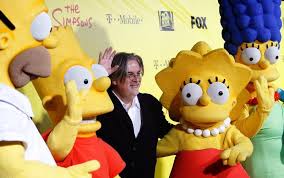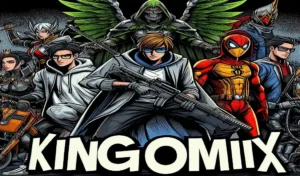
The yellow fantasy simpsonsew shows have impacted popular culture like The Simpsons. Created by Matt Groening, this animated show has cemented itself as a timeless, humorous, and often satirical depiction of American family life. It has enchanted audiences for over three decades with its bright yellow characters and fantastical storytelling. This article takes an in-depth look at the unique elements that have turned The Simpsons into a legendary cultural staple.
The Yellow World of Springfield: Iconic Characters and Visual Style
One of the first things that draws people to The Simpsons is its unique visual style. The characters, from Homer to Lisa to Chief Wiggum, are bright yellow—a color choice that immediately sets the show apart from other animated series. But what makes this choice so effective?
The iconic yellow hue of the characters has a psychological impact. Yellow is often associated with warmth, energy, and humor, which aligns with the show’s often lighthearted and whimsical tone. By creating characters that are universally recognized for their yellow skin, The Simpsons has made an indelible mark in the world of television.
Homer, Marge, Bart, Lisa, and Maggie: The Quintessential Yellow Family
At the heart of The Simpsons is the core family of Homer, Marge, Bart, Lisa, and Maggie. Each character has a unique personality that resonates with viewers on different levels:
- Homer Simpson represents the flawed, yet endearing everyman. His frequent blunders and simple desires reflect a relatable aspect of the human condition.
- Marge Simpson is the glue that holds the family together, embodying patience, compassion, and resilience. Her loyalty to Homer, despite his many faults, speaks to a timeless ideal of love and commitment.
- Bart Simpson, the troublemaker, captures the spirit of youthful rebellion. His iconic catchphrase, “Eat my shorts!” has become part of pop culture history.
- Lisa Simpson represents intelligence, idealism, and progressive values, often acting as a moral compass in the show.
- Maggie Simpson, though a baby, has an endearing presence and often demonstrates surprising wisdom and strength.
These characters are not only humorous but relatable, making The Simpsons a show that appeals to viewers of all ages.
Satirical Storytelling: Social and Political Commentary the yellow fantasy simpsons
One of the hallmarks of The Simpsons is its ability to weave social and political commentary into its storylines. The show tackles issues such as environmentalism, education, and politics in a way that is both insightful and entertaining. The satire is often biting, yet it is presented in a lighthearted, accessible manner that doesn’t alienate viewers.
In an episode like “Homer vs. Lisa and the 8th Commandment,” the show explores ethical issues surrounding media piracy. By taking complex social themes and simplifying them into easily digestible stories, The Simpsons encourages viewers to think critically about the world around them.
The Simpsons and Pop Culture References: Bridging Generations
Part of The Simpsons‘ enduring appeal is its use of pop culture references. From classic films to iconic music, the show frequently references works that are beloved by older generations while also integrating modern cultural references. This balance allows The Simpsons to appeal to a wide audience, including both long-time fans and new viewers.
Episodes like “Marge vs. the Monorail,” written by Conan O’Brien, are prime examples of this style. The episode is not only a hilarious satire of urban planning but also a playful homage to classic musicals and the monorail craze of the early 20th century.
The Yellow Fantasy that Shaped Animation
The Simpsons paved the way for other animated sitcoms, such as Family Guy and South Park, and transformed animation from a medium associated mainly with children’s entertainment to a form of storytelling that appeals to adults as well. By addressing mature themes, The Simpsons challenged perceptions and helped elevate animation to a respected art form.
The Evolution of The Simpsons: From Prime-Time Hit to Cultural Legacy
Since its debut in 1989, The Simpsons has evolved significantly. Early seasons focused on family dynamics and straightforward humor, while later seasons expanded into more elaborate and often surreal plotlines. Although some fans argue that the quality of the show has declined, others appreciate how it has kept up with the changing times by introducing new characters, technology, and social issues.
Lasting Appeal: The Simpsons’ Role in Nostalgia Culture
In recent years, nostalgia has played a significant role in popular culture, and The Simpsons holds a special place in this trend. With over 30 seasons and counting, the show provides a comforting sense of continuity and familiarity, especially for fans who grew up with it. Its iconic status means that it often gets referenced, parodied, and even celebrated in other forms of media, which keeps it relevant and fresh for newer audiences.
Conclusion: The Yellow Fantasy Lives On
The Simpsons remains a vital part of television history, known for its iconic characters, satirical storytelling, and distinctive yellow fantasy world. Its influence is undeniable, and its ability to adapt to changing times ensures that it will continue to entertain and inspire for years to come. For more detail please visit techwebinsights.com
4o







